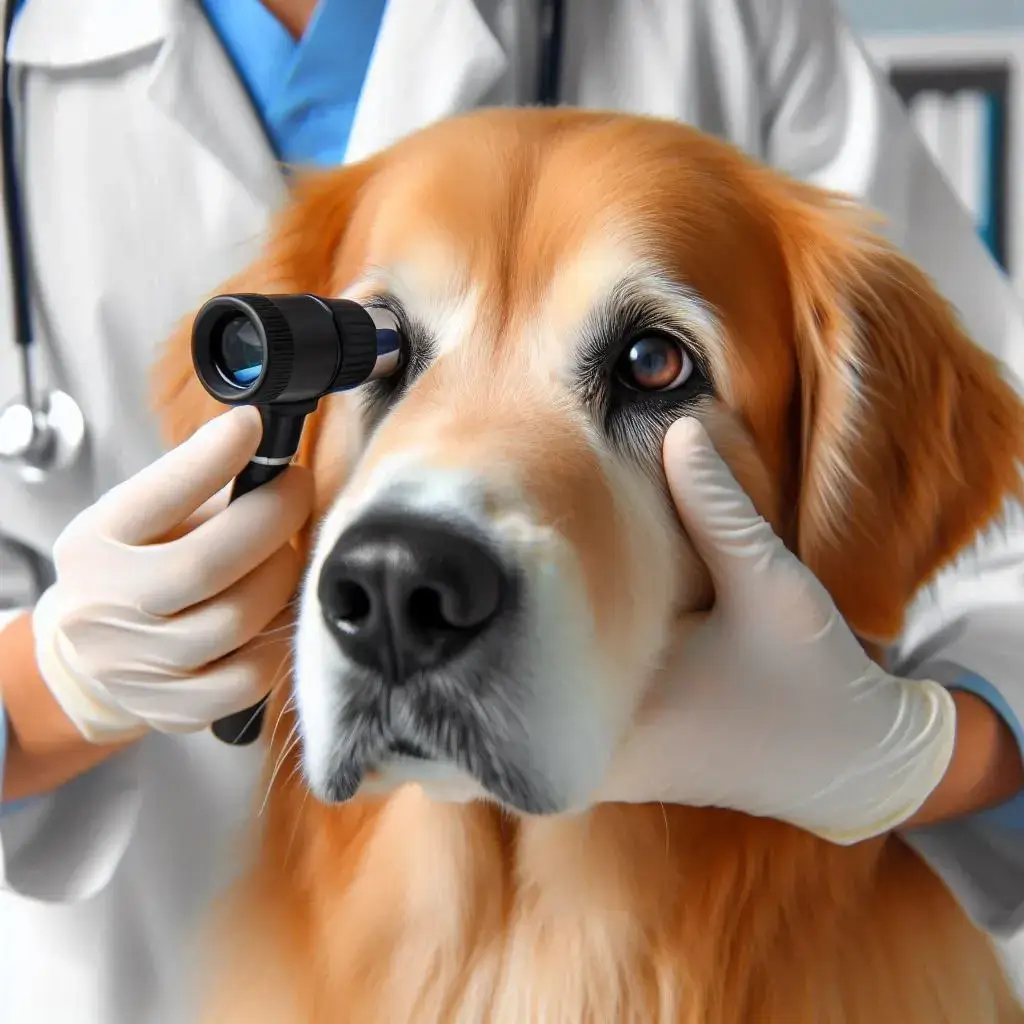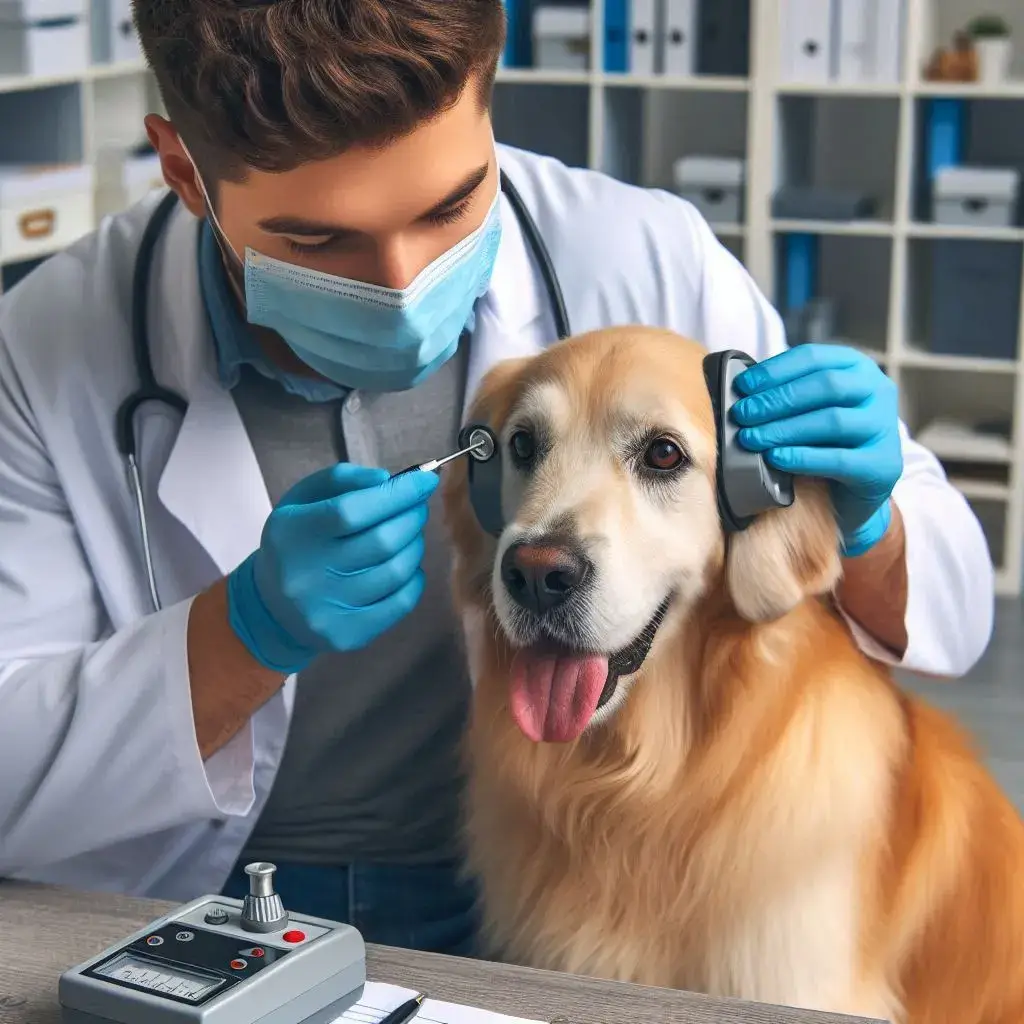Understanding canine vision and hearing loss is crucial for every dog owner. As our furry companions age or face certain health issues, their senses may deteriorate, impacting their quality of life. This comprehensive guide delves into the causes, symptoms, and management strategies to help you care for your dog’s sensory health.
What is canine vision loss?
canine vision loss refers to the partial or complete loss of sight in dogs. This condition can arise from various factors, including genetics, age, disease, or trauma. Understanding the underlying causes can help in early detection and management.
Causes of Vision Loss in Dogs
Genetic Factors Certain breeds are predisposed to hereditary eye conditions that can lead to vision loss. For example, progressive retinal atrophy (PRA) is common in breeds like Poodles and Labradors.
Age-Related Issues As dogs age, their eyesight may deteriorate, similar to humans. Cataracts and glaucoma are common age-related eye problems that can impair vision.
Diseases and Infections Infections, such as conjunctivitis or keratitis, can damage the eye tissues. Diseases like diabetes can also lead to complications affecting vision.
Trauma and Injuries Accidents or injuries to the eye can cause immediate and sometimes permanent damage. It’s important to seek veterinary care promptly in such cases.
Symptoms of Vision Loss in Dogs

Behavioral Changes Dogs with vision loss may become more cautious or hesitant, especially in unfamiliar environments. They might bump into objects or have difficulty navigating.
Physical Signs Physical indicators include redness, cloudiness in the eyes, or excessive tearing. Observing these signs warrants a visit to the vet.
Diagnosing Vision Loss in Dogs

Veterinary Examinations Regular veterinary check-ups are crucial. Vets use tools like ophthalmoscopes to examine the eye’s structure and health.
Diagnostic Tests Tests like the menace response test, where a hand is waved in front of the dog’s eyes to check for blinking, can help diagnose vision problems. Electroretinography (ERG) may also be used for detailed assessments.
Managing Vision Loss in Dogs

Creating a Safe Environment Keep your dog’s living area consistent to avoid confusion. Ensure that pathways are clear and use rugs or mats to help them navigate safely.
Training and Adaptation Techniques Training commands like “step up” or “step down” can assist dogs in adapting to their surroundings. Using scents or textures can also guide them.
Preventing Vision Loss in Dogs
Regular Veterinary Check-Ups Routine check-ups can catch early signs of eye conditions. Early intervention can prevent further deterioration.
Preventative Care Maintain eye hygiene by cleaning any discharge and protecting your dog’s eyes from irritants or harsh chemicals.
What is Canine Hearing Loss?
Canine hearing loss occurs when a dog’s ability to hear diminishes or ceases. It can be a gradual process, often associated with aging, or sudden due to injury or illness.
Causes of Hearing Loss in Dogs
Age-Related Hearing Loss Just like humans, dogs can experience hearing loss as they age. Presbycusis, a gradual loss of hearing, is common in older dogs.
Genetic Predisposition Certain breeds have a higher risk of congenital deafness. Dalmatians, for example, are known for a genetic predisposition to hearing loss.
Infections and Inflammations Ear infections, if left untreated, can lead to chronic damage and hearing loss. Otitis externa and media are common culprits.
Exposure to Loud Noises Prolonged exposure to loud noises, such as fireworks or gunshots, can damage a dog’s hearing. It’s important to protect your dog from such environments.
Symptoms of Hearing Loss in Dogs

Changes in Response to Commands A dog with hearing loss may not respond to calls or commands as before. They might also show less interest in previously engaging sounds.
Behavioral Changes Hearing-impaired dogs might become more anxious or clingy, especially in unfamiliar settings. They may startle more easily.
Diagnosing Hearing Loss in Dogs

Veterinary Evaluations A vet can assess hearing through behavioral tests, such as sound stimulation. Observing the dog’s response helps in diagnosing hearing capabilities.
Audiometric Tests Advanced tests like Brainstem Auditory Evoked Response (BAER) provide precise measurements of hearing capacity, especially useful for detecting partial hearing loss.
Managing Hearing Loss in Dogs
Communication Techniques Use visual signals or hand gestures to communicate with your dog. Consistency in commands can help them understand better.
Safety Measures Ensure your dog is always supervised outdoors, as they might not hear dangers like approaching cars. Using a vibrating collar can also aid in getting their attention.
Preventing Hearing Loss in Dogs
Regular Ear Care Clean your dog’s ears regularly to prevent infections. Avoid using cotton swabs that can push debris further into the ear canal.
Avoiding Loud Environments Protect your dog from environments with excessive noise. During events like fireworks, keep them indoors in a calm, quiet space.
The Emotional Impact of Sensory Loss on Dogs
Understanding Canine Emotions Dogs experience emotions and can feel confused or anxious due to sensory loss. Recognizing their emotional needs is essential.
Providing Emotional Support Spend quality time with your dog, offering affection and reassurance. Consistent routines and positive reinforcement help them adjust.
Living with a Sensory-Impaired Dog

Daily Routines Establishing a consistent daily routine helps sensory-impaired dogs feel secure. Stick to regular feeding, walking, and playtimes.
Enrichment Activities Engage your dog with sensory-appropriate activities. Puzzle toys, scent games, and tactile play can provide mental stimulation and enjoyment.
FAQs about Canine Vision and Hearing Loss
How can I tell if my dog is losing its vision? Look for signs such as bumping into objects, hesitation in new environments, and changes in eye appearance like cloudiness.
Can vision loss in dogs be treated? Depending on the cause, treatments range from medication for infections to surgery for cataracts. Early detection improves the chances of successful management.
What should I do if I suspect my dog is deaf? Consult your vet for a thorough examination. They may perform tests to confirm the degree of hearing loss and suggest management strategies.
How can I help my blind dog navigate? Use consistent furniture placement, add tactile markers like rugs, and teach commands to guide them. Ensure their environment is safe and familiar.
Are certain breeds more prone to sensory loss? Yes, some breeds have genetic predispositions. For example, Dalmatians are prone to deafness, while Poodles may suffer from progressive retinal atrophy.
Can sensory loss in dogs be prevented? While genetic factors cannot be changed, regular veterinary check-ups, proper ear and eye care, and avoiding exposure to loud noises can help in prevention.
Conclusion
Understanding canine vision and hearing loss is fundamental to ensuring the well-being of our beloved pets. By recognizing the signs early, seeking prompt veterinary care, and implementing supportive strategies, you can significantly enhance your dog’s quality of life. Remember, with patience, love, and proper care, dogs with sensory impairments can lead happy and fulfilling lives.


